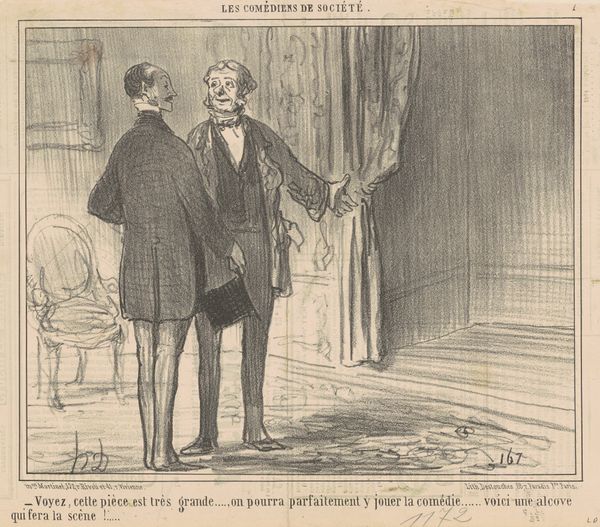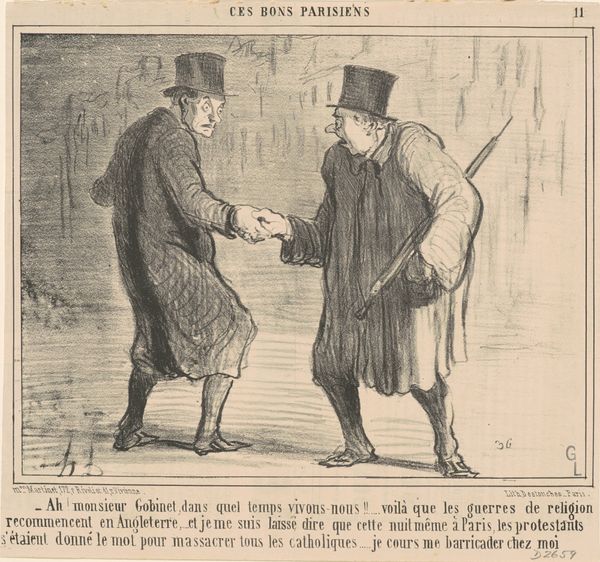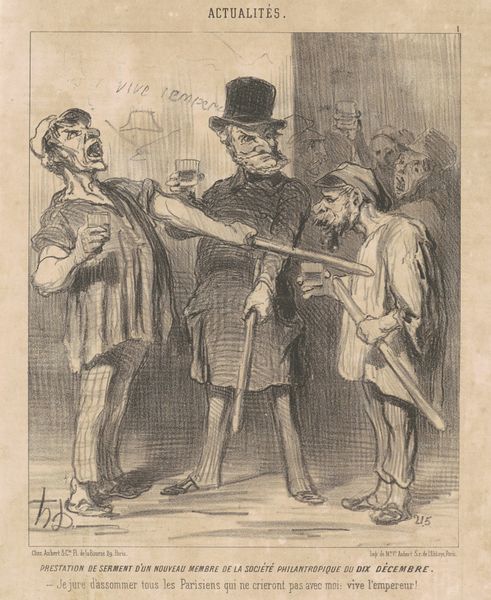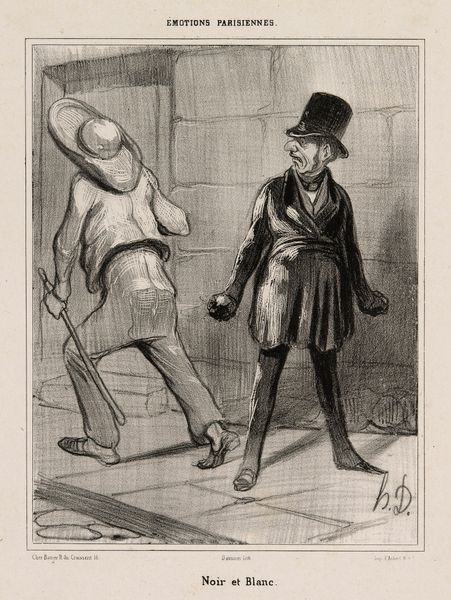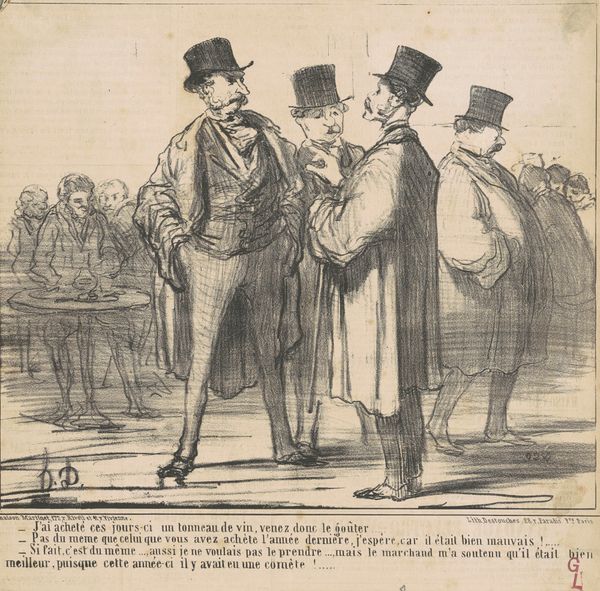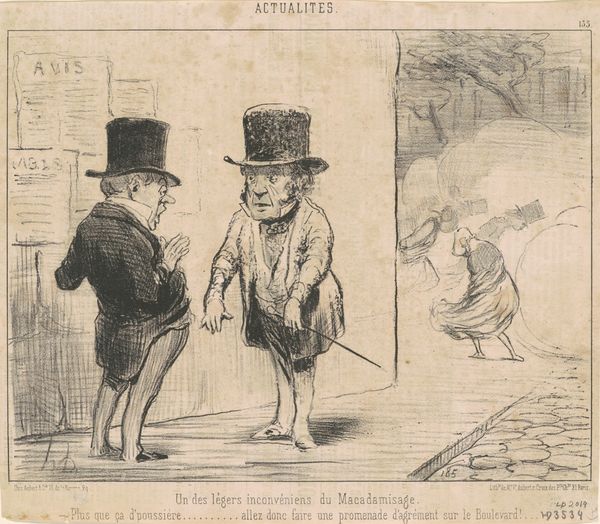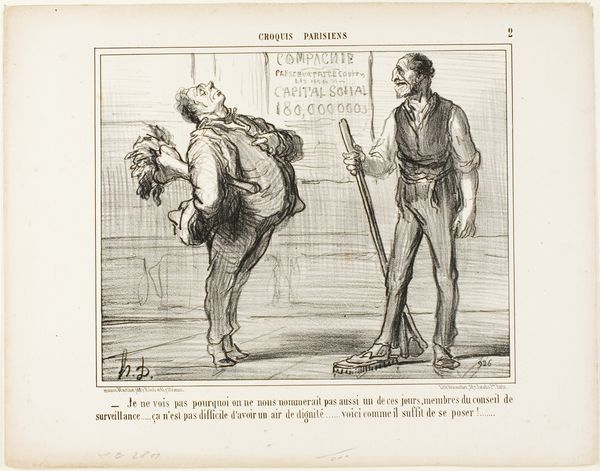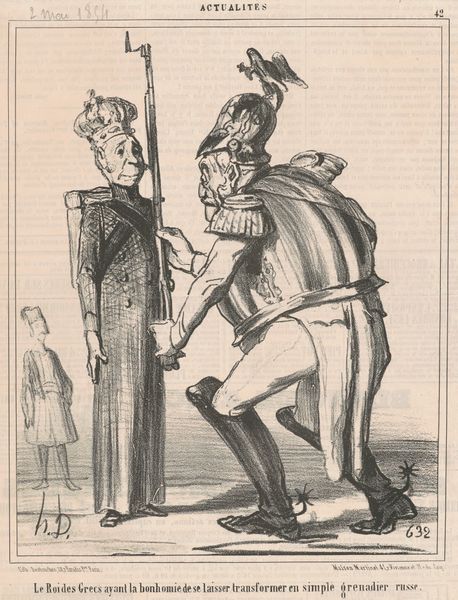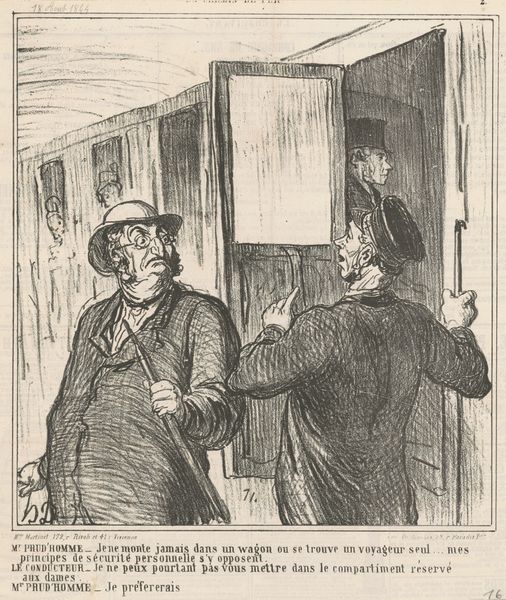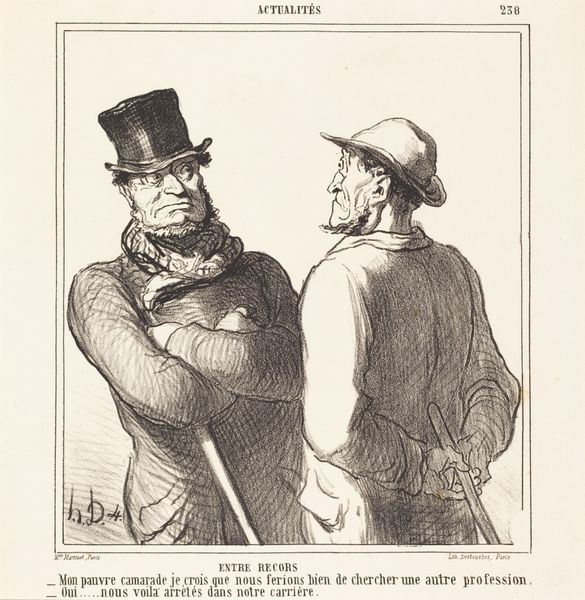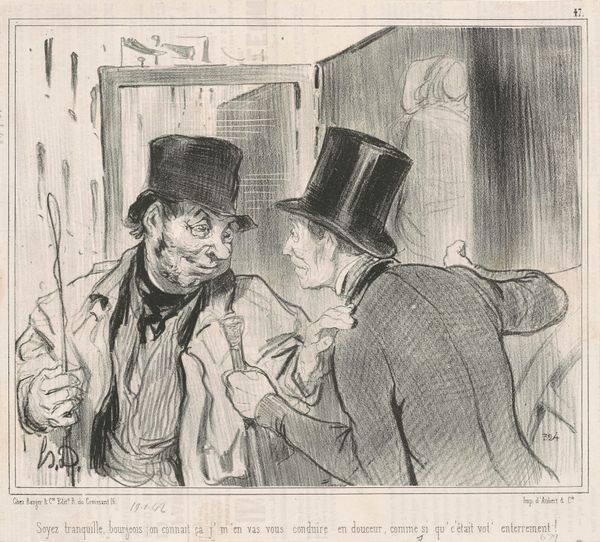
drawing, lithograph, print, pen
#
drawing
#
16_19th-century
#
lithograph
# print
#
caricature
#
romanticism
#
pen
#
genre-painting
#
realism
Copyright: National Gallery of Art: CC0 1.0
Curator: We're looking at "M. Vautour: Je ne saurais trop...", a lithograph by Honoré Daumier, created around the mid-19th century. It depicts two men, one clearly wealthier than the other, in what appears to be a tense conversation. Editor: The first thing that strikes me is the sharp contrast between the two figures – one so tall and sharply dressed, almost bird-like with his pointed features, against the slouching, downtrodden figure in front of him. It's immediately evocative. Curator: Daumier was a master of social commentary. The print belongs to a series satirizing the relationship between landlords and tenants in 19th-century Paris, capturing the socio-economic inequalities of the time. The title suggests Vautour is the landlord. Editor: Absolutely. Vautour is a fitting name. He looks predatory. And what a disturbing text in the image, the landlord declaring he will evict any pregnant tenant that requests a reduction in their rent! The visual imbalance really highlights that power dynamic; the landlord quite literally looking down on his tenant. It’s infuriating to observe this type of control, yet historically telling. Curator: Indeed. The setting is important too. Note the sign "Concierge" over the man who is seemingly being berated; suggesting a location within an apartment building where social friction simmers beneath the surface. These visual narratives speak to a broader concern for social justice and the lives of the working class. Editor: Daumier's technique also plays a role. The lithograph, with its quick, expressive lines, has this urgency about it. Almost like a snapshot of a very familiar form of structural violence. The caricatures aren’t just funny; they carry the weight of lived experience of inequality and disenfranchisement. You get the sense these images were circulating within that lived experience, raising class consciousness amongst its popular audience. Curator: Precisely, Daumier was publishing regularly in periodicals at the time, making this form of social criticism accessible. His choice of pen and ink combined with lithography allowed for relatively quick production, furthering a wider distribution, and embedding these criticisms into everyday life. Editor: Looking at this piece, I am left to consider how much these imbalances still permeate in our own era. Artworks like this should force us to consider the long arc of history, as our struggle continues. Curator: It reminds us that engagement, both in artistic expression and societal awareness, remains critical, a tradition carried down through generations of socially conscious artists.
Comments
No comments
Be the first to comment and join the conversation on the ultimate creative platform.
